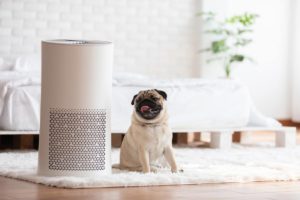 Homeowners nationwide are waking up to the benefits of air purifiers, especially since word has gotten around that the air inside homes is more polluted than the air outdoors. But just how does air purifier science work?Below are the types of devices that might help you understand air purifier science better:
Homeowners nationwide are waking up to the benefits of air purifiers, especially since word has gotten around that the air inside homes is more polluted than the air outdoors. But just how does air purifier science work?Below are the types of devices that might help you understand air purifier science better:
Understanding Air Purifier Science
Mechanical filters.
Mechanical air filters, utilizing the most basic type of air purifier science, trap particles with a filtration medium. The denser the filter, the finer the particulates they will catch. Cheap filters will not do much to clean air; for that you need a pleated filter rated at least 8 to 10 on the MERV (Minimum Efficiency Reporting Value) scale.
Electrostatic filters.
Also known as ionizing purifiers, these filters differ from pleated filters in that they capture particles of dust, pollen, and other airborne particles with an electric charge. The particles adhere to a collection plate as they are drawn through the system with the return air. The plates must be cleaned now and then to be effective. The plates usually last a few years and then must be replaced.
HEPA filters.
High-Efficiency Particulate Air (HEPA) filters are extremely dense filters and are seldom found in residential settings unless there is an occupant who requires extra-dense filtration of particulate matter due to breathing problems. HVAC systems must be modified to accommodate HEPA filters.
Ozone generators.
These purifiers are similar to ionizing purifiers in that they attract particles with an electric charge, with the difference being that they alter oxygen molecules and turn them into ozone. Breathing ozone can be harmful.
Activated charcoal.
These filtration devices are used to get rid of gases such as cigarette smoke through a process known as adsorption.
UVGI, or Ultraviolet Germicidal Irradiation.
UVGI lights are installed in the HVAC system and disrupt the DNA of living particulates (germs, mold) as they are drawn through the return air.
Understanding air purifier science can help you improve your indoor air quality.
For more about air purifier science, contact Hansberger Refrigeration and Electric Company of Yuma.

